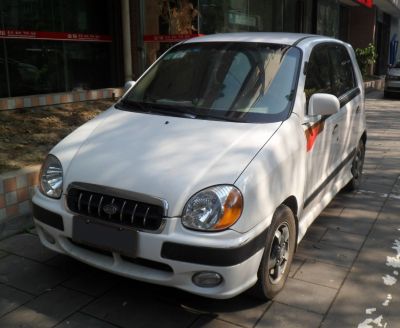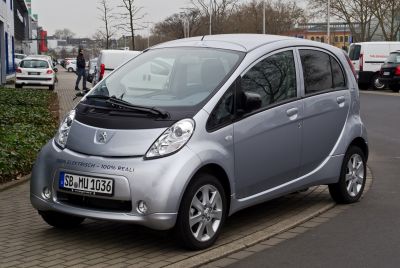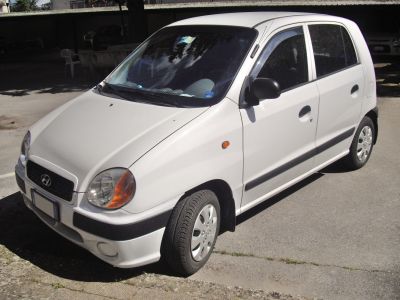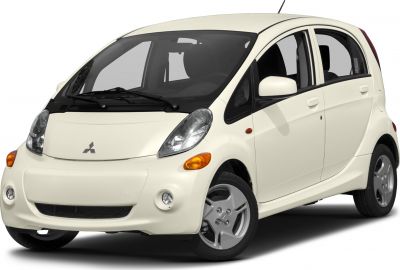 1997 Hyundai Atos Dimensions, Size & Specs
1997 Hyundai Atos Dimensions, Size & SpecsMeasurements of the 1997 Hyundai Atos, engineered for optimal performance and comfort
| Dimensions | |
|---|---|
| Length: | 3495 mm137.6 in11.5 ft |
| Width: | 1495 mm58.9 in4.9 ft |
| Height: | 1615 mm63.6 in5.3 ft |
| Trunk Capacity: | 263 liter9.3 cu ft |
| Trunk Capacity (Max): | 1064-1084 liter37.6-38.3 cu ft |
| Weight Specifications | |
| Curb Weight: | 830-941 kg1830-2075 lbs |
| Maximal permitted Weight: | 1220-1316 kg2690-2901 lbs |
| Tire Specifications | |
| Rims Size: |
|
| Tire Sizes: |
|
The Hyundai Atos (1997-2008) is a compact hatchback designed primarily for urban driving and efficiency. It measures 3495 mm (137.6 inches) in length, 1495 mm (58.9 inches) in width, and stands tall at 1615 mm (63.6 inches) in height, offering a tall-bodied design that maximizes interior space while maintaining a small footprint on the road. Weighing between 830 kg and 941 kg (1,830 to 2,075 lbs), it is a lightweight vehicle that contributes to fuel efficiency and nimble handling in city traffic.
The Hyundai Atos offers practical versatility with a luggage capacity of 263 liters (9.3 cubic feet) under normal conditions, expandable to between 1064 and 1084 liters (37.6 to 38.3 cubic feet) when the rear seats are folded down. This capacity enlargement enables better accommodation for larger cargo or luggage needs, making the Atos suitable for various daily tasks.
Equipped with 13-inch rims paired with tire sizes of 155/70 R13 or 155/80 R13, the Atos features smaller wheels that align with its city car classification, helping in maneuverability and lowering replacement costs. The maximum allowable vehicle weight ranges from 1220 to 1316 kg (2,690 to 2,900 lbs), which includes passenger and cargo load.
This generation of the Hyundai Atos is notable for combining compact exterior dimensions with surprisingly spacious interior and cargo space, making it a practical option for individuals seeking an affordable, efficient, and easy-to-park hatchback during its production period from 1997 to 2008.
Discover the standout features that make the 1997 Hyundai Atos a leader in its class
Have a question? Please check our knowledgebase first.
The 1997 Hyundai Atos has a compact and practical exterior suitable for city driving. Its length measures 3495 mm (approximately 137.6 inches), the width is 1495 mm (around 58.9 inches), and the height stands at 1615 mm (about 63.6 inches). These dimensions make it a small hatchback with a tall design, offering good interior space relative to its footprint.
The curb weight of the Hyundai Atos generation ranges between 830 kg and 941 kg (which is about 1,829 to 2,075 pounds). This relatively low weight contributes to its fuel efficiency and nimbleness in urban environments. The maximum permissible weight of the vehicle spans from 1220 kg to 1316 kg (approximately 2,690 to 2,900 pounds), accounting for passengers, cargo, and additional load capacity.
The Hyundai Atos offers a practical luggage capacity for a city hatchback. With rear seats in the upright position, it provides 263 liters (about 9.3 cubic feet) of cargo space, which is sufficient for daily shopping or small luggage. When the rear seats are folded down, the cargo space expands significantly to between 1064 and 1084 liters (approximately 37.6 to 38.3 cubic feet), allowing for the transport of larger items and improving versatility for carrying more substantial loads.
The Hyundai Atos comes equipped with 13-inch rims that provide a balance between ride comfort and handling. The tire sizes used on this model are typically 155/70 R13 and 155/80 R13. These relatively narrow tires aid in fuel efficiency and provide sufficient traction for urban and suburban driving conditions, aligning with the compact vehicle design.
Yes, the Hyundai Atos is well-suited to fit into a standard residential garage. With a length of 3495 mm (137.6 inches or around 11.5 feet) and a width of just 1495 mm (58.9 inches or approximately 4.9 feet), it is smaller than many modern cars, allowing it to easily fit within average garage spaces designed for standard passenger vehicles. Its compact footprint makes parking and garage storage convenient for most households.
The Hyundai Atos introduced in 1997 is essentially the first generation of this model; therefore, it doesn't have a direct predecessor under the same name. However, when compared to other small city cars of the era, the Atos offered a taller but compact hatchback design prioritizing interior space efficiency over sporty dimensions. Its height of 1615 mm (63.6 inches) was taller than many competitors, increasing passenger comfort and headroom, while the overall length and width remained compact for urban maneuverability.
Compared to similar city hatchbacks from the late 1990s, such as the Suzuki Alto or Fiat Panda, the Hyundai Atos stands out for its tall-boy design. At 1615 mm (63.6 inches) in height, it is taller than many competitors, providing increased interior headroom and a more upright seating position. Its length of 3495 mm (137.6 inches) and width of 1495 mm (58.9 inches) place it firmly within the compact segment, making it maneuverable in tight urban spaces while the ample luggage capacity with folded seats is a distinct advantage for a city car.
The curb weight of the Hyundai Atos ranges from 830 kg to 941 kg (1,829 to 2,075 pounds), while its maximum weight limit is between 1220 kg and 1316 kg (2,690 to 2,900 pounds). The variation in weight depends on equipment levels and trim variants over the production years from 1997 to 2008. Lighter models typically provided better fuel efficiency and agility, while heavier trims might have included additional features or safety equipment.
The Hyundai Atos features 13-inch rims paired with tire sizes such as 155/70 R13 and 155/80 R13, which are relatively small and narrow by modern standards. These specifications contribute to a soft ride and good fuel economy due to smaller rolling resistance and lower unsprung weight. However, smaller tires may mean slightly less grip and stability at high speeds or on rough terrain compared to larger tires, but for an urban-focused city hatchback like the Atos, this setup optimizes comfort and economy.
With a height of 1615 mm (63.6 inches), the Hyundai Atos provides a spacious, airy cabin for passengers, with more headroom than many competing city cars of its era. This taller stance also enables an upright seating position, aiding comfort on short and long drives. The compact length (3495 mm or 137.6 inches) and narrow width (1495 mm or 58.9 inches) make the Atos very maneuverable in tight urban environments, aiding in easy parking and navigation through crowded streets, ideal for city commuters.
Discover similar sized cars.

| Production: | 2000-present |
|---|---|
| Model Year: | 2000 |
| Length: | 3495 mm137.6 in |
| Width: | 1495 mm58.9 in |
| Height: | 1580 mm62.2 in |

| Production: | 2009-2020 |
|---|---|
| Model Year: | 2009 |
| Length: | 3475 mm136.8 in |
| Width: | 1792 mm70.6 in |
| Height: | 1608 mm63.3 in |

| Production: | 1999-2008 |
|---|---|
| Model Year: | 1999 |
| Length: | 3495 mm137.6 in |
| Width: | 1485-1495 mm58.5-58.9 in |
| Height: | 1580 mm62.2 in |

| Production: | 2009-2020 |
|---|---|
| Model Year: | 2010 |
| Length: | 3480 mm137.0 in |
| Width: | 1792 mm70.6 in |
| Height: | 1610 mm63.4 in |

| Production: | 2009-2020 |
|---|---|
| Model Year: | 2009 |
| Length: | 3475 mm136.8 in |
| Width: | 1855 mm73.0 in |
| Height: | 1610 mm63.4 in |
